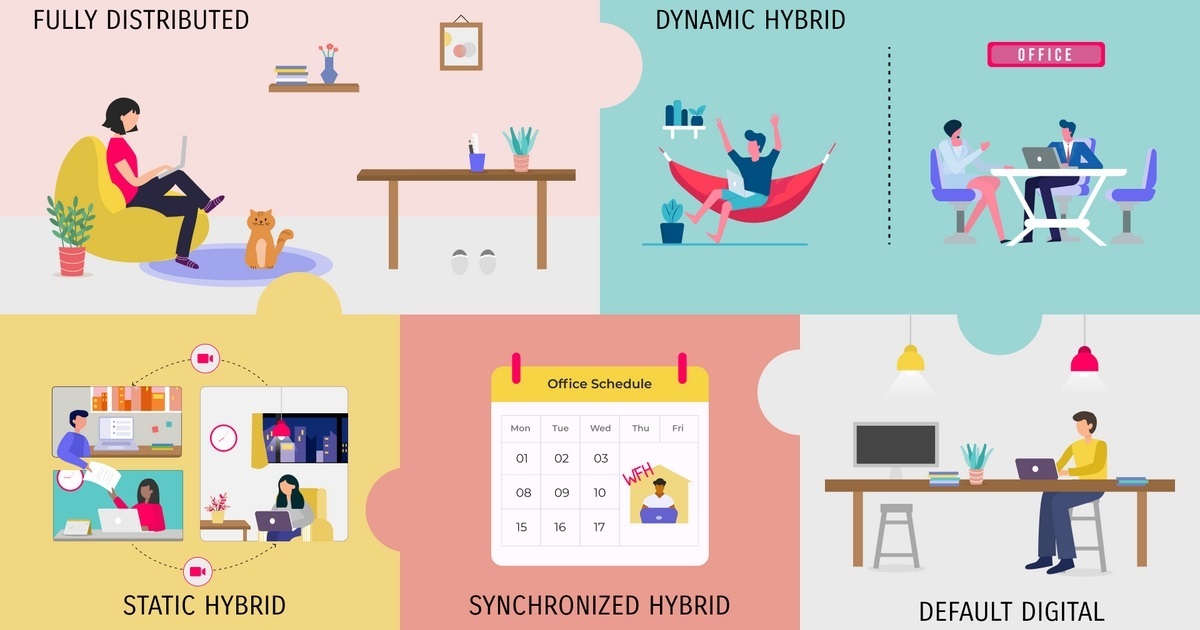The pandemic has not only disrupted our personal lives but also transformed the way we work. A majority of the workforce globally moved to a Work-from-home (WFH) model almost overnight. The initial verdict on the WFH model (as long as it did not adversely impact productivity) was a resounding YES. It was obvious that the immediate concern for all organizations was the continuity of work and of servicing their customers. Work-from-home also brought with it certain benefits for both employers and employees, which made it easier for them to accept the “new normal”.
Over time, as the world re-opened with caution, organizations adopted a hybrid work model to ease their employees back into the work-from-office regimen, while also meeting the government specified covid-protocol of permitting a specified percentage of workforce to attend offices on any given day. This hybrid ‘work model’ has now entrenched itself as a hybrid ‘work culture’ at many organizations, big and small, with a promise to become the norm in the near future.

Why has the hybrid work model gained traction?
During the time of WFH, employees and employers understood the benefits of the new work model. For the employees, the work from home model provided them greater flexibility. They had more family time. They could work from their hometowns and save on expenses they otherwise incurred on living close to their place of work. There was neither the exhausting daily travel to and from work, nor the hassle of getting ready for work every day. The work-life balance appeared to be better. For the employers, it meant scaling down on their office space and infrastructure (a substantial saving), lower operational costs, possibility of hiring talent from across the globe, and happier and more productive employees.
The Challenges of the Hybrid Model
While the hybrid work model has been hailed as the new workplace strategy, it comes with its own challenges. Employee resistance to work from office, lower inter-personnel interaction, weaker employee-organization engagement, and break-down in collaborative efforts. Ultragenic has not been untouched by these challenges. We have had to make several conscious efforts to ensure the success of the hybrid work model. It is still a work in progress to achieve Organizational and Management drivers.
We are committed to creating a great work environment that builds trust amongst team members, instills confidence in them about their role in the organization’s future plans and fosters excellence.
Ultragenic best practices for the Hybrid Work Environment
Here are the steps we have implemented at Ultragenic, which have delivered positive results in the team sentiments and their acceptance of the hybrid work model.
Striking the right balance: We have implemented a 60-40 model for balancing remote working with the office. Our colleagues work 3 days from the office and two days from home. This provides them the best of both worlds. The attendance is spread out through the week as per work commitments and is decided by project team leads in consultation with their respective teams.
Upgraded Communication Infrastructure: We have ensured adequate technology infrastructure at every team member’s home so that they can function without any challenges. Equally important was to invest in upgrading the office infrastructure to seamlessly support online collaborations and team meetings.
Created an uplifting workspace aesthetic: We have given a complete overhaul to the aesthetics of the workspace so that colleagues are motivated to work from office. They feel energized and comfortable while they are here.
Ensured equal visibility: We have made a rule that all team calls are video by default even if one of the participants is working remotely. This ensures equal face time for all team members and also improves team engagement by reducing distractions.
Built inclusivity: Team events, trainings and offsite events are organized regularly to encourage inter-team and inter-function engagement and interaction. This ensures that teams are not working in silos but are also bonding with other colleagues at work.
Established effective communication: We have been leveraging social groups and channels to facilitate open lines of communication between the employees and management. Organization updates are also communicated through these channels so that everyone feels included. Every effort is being made to ensure there is equity of experience and opportunity for those working from office and from home.
In all of these efforts, the game-changer has been clear, open and free communication. From making colleagues understand the importance of coming to work and the impact it has on the work culture and their own career, to ensuring every colleague has a sense of kinship with the organization and feels secure in their position, effective communication has played a pivotal role. In addition, we have employed a top-down approach to great effect, where the senior leadership has walked the talk and set an example for their respective teams to follow. All protocols have been formulated through a collaborative approach, with the leadership adopting and observing these protocols first, which has made their acceptance easier.
Rethinking the Hybrid Work Culture together
A culture is not established in a single day. It undergoes constant evolution till you settle on a system that works for everyone. A key driver is inclusive and collaborative engagement with employees. And at Ultragenic, we are shaping the future of our Hybrid Work Culture, together as one team.












